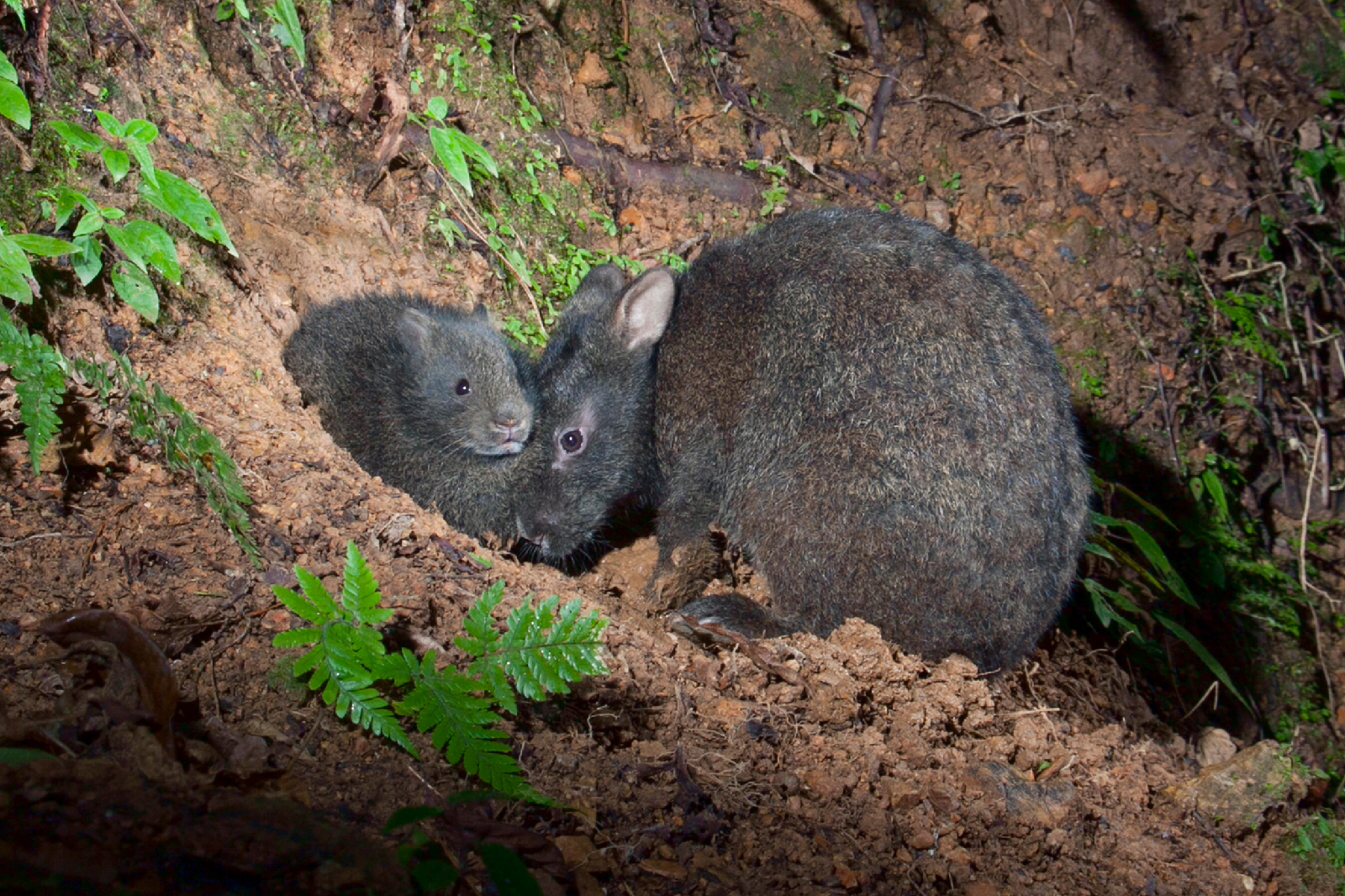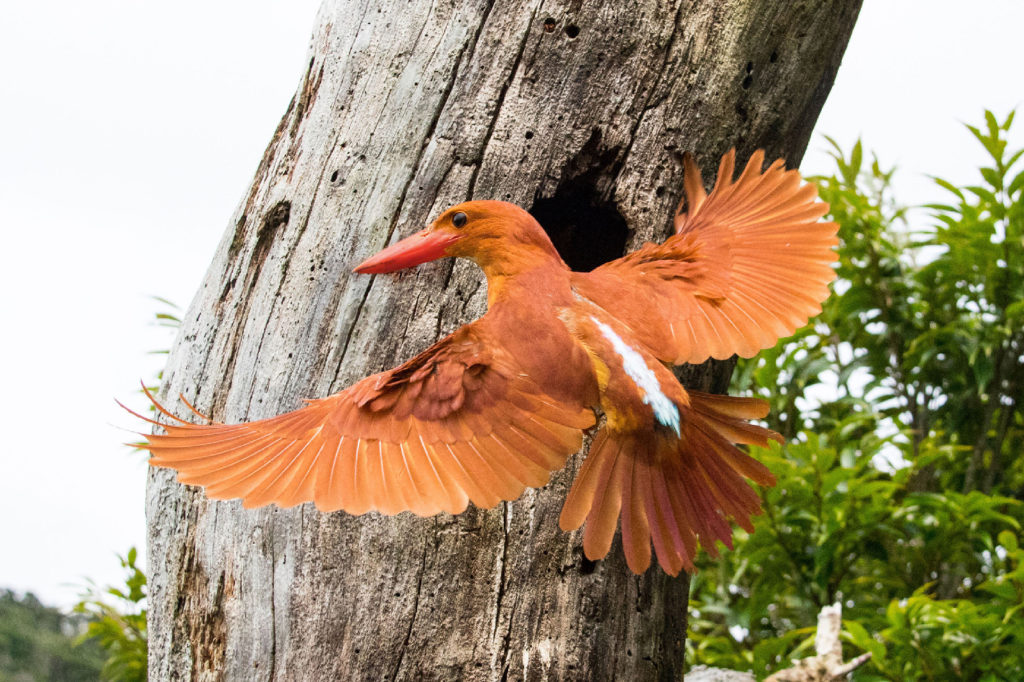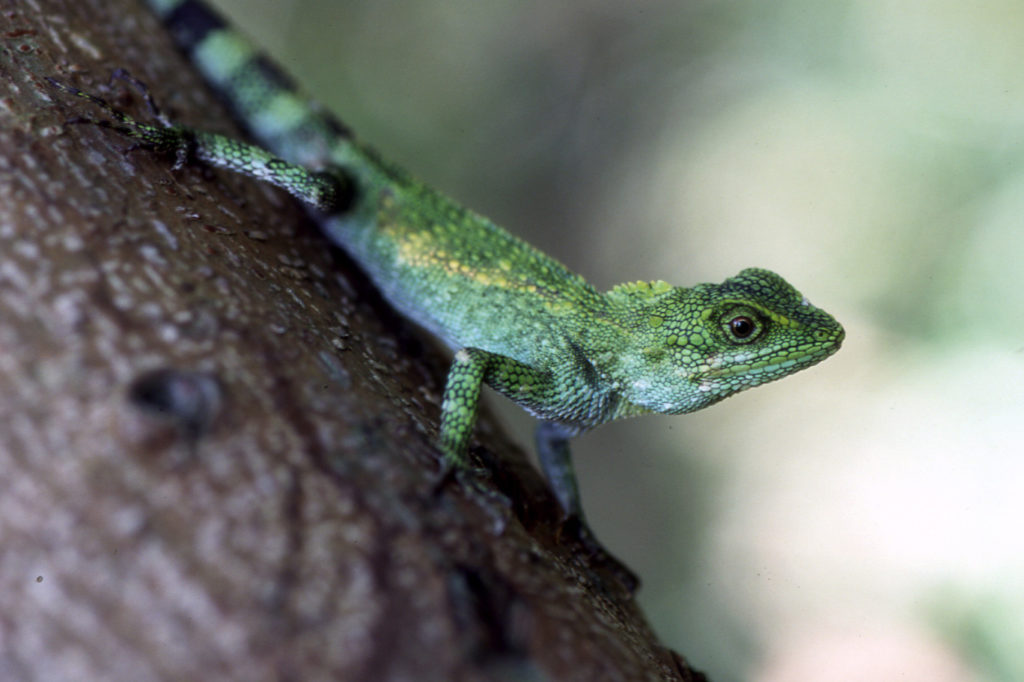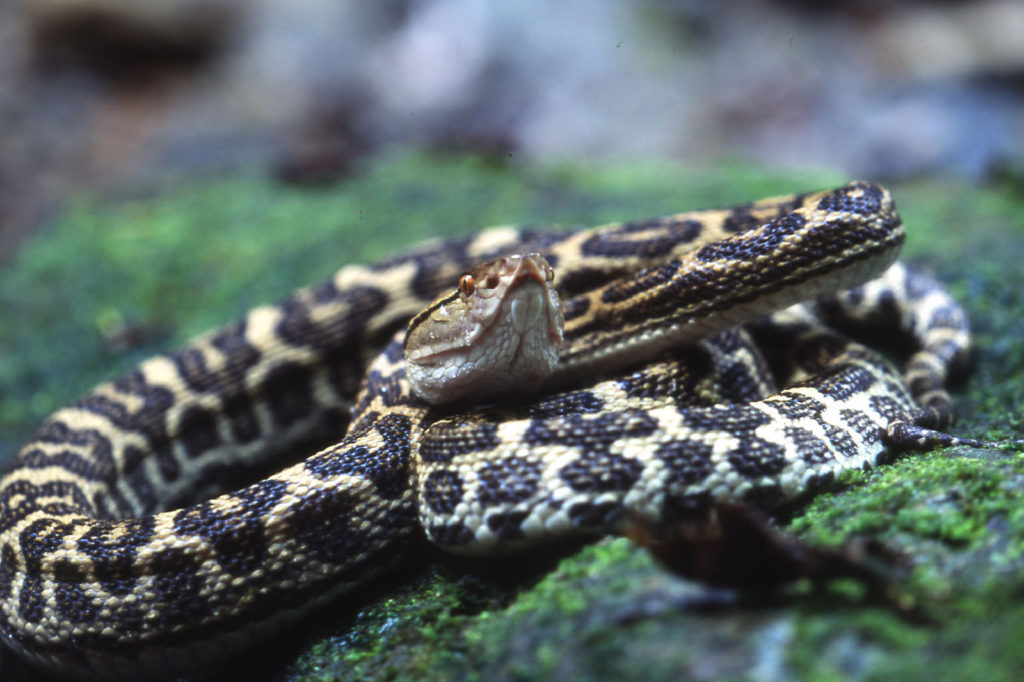
Animals of Forest
Child-raising of the Amami Rabbit (Pentalagus furnessi)
It was introduced on the other website!
In the deep black of a July night in 1986, I first laid eyes on the “living fossil,” the Amami Black Rabbit. The eyes that floated out of the light on a path in Kinsakubaru Forest were the color of rubies. Perhaps it was the unbelievable excitement of that experience, but I started to go often to the woods, pushing brush and limbs aside to go deeper and film a nocturnal rabbit with strong tendency to caution, and about whose ecology almost nothing was known.
Following rabbit tracks for half a year, I finally found a nest. I put together an unmanned video camera that would be triggered by pressure on tread plate to shoot the comings and goings of the rabbits who lived there. I set up the camera and went the next day to check on it. The black rabbit was on the film. Next, I worked to develop equipment sensitive to heat from body temperatures. It also had to be water-resistant to be protected against rain and humidity.
The longer I spent trekking in the humid, subtropical virgin forest, the more I realized that the vast diversity of the forest was the host that has protected the Amami Rabbit since primeval times. And that the water that is the lifeblood of the woods helps plants grow abundantly for the black rabbit to eat through all four seasons, and even that the rabbit has been protected by the presence of the poisonous habu pit viper against people and natural enemies.
I had heard from older Amamians that the black rabbit raises its kittens in a separate hole. On one of the many times I set out to patiently observe them, my efforts were rewarded when I captured the first images in the world of the black rabbit nursing its young and raising its kittens in 1996.
According to my observation log, the mother rabbit came close to the nest hole at almost the same time during the night once every 2 days and made a “pyuu-ee” sound over and over again. Cautiously keeping an eye on its surroundings, the black rabbit used its front legs and mouth to dig a hole in about 10 minutes. As a baby rabbit start to come out of the nest hole, the mother rabbit caresses its face in love. Then, it stands up using only its hind legs in order to push its chest out and begin nursing the kitten. Nursing ensured for a mere 2-3 minutes. Next, the mother rabbit gathered together the dirt it had scraped out of the ground for the hole for about 20 – 30 minutes, pushed it back in the nest hole to completely block the entrance, and left the scene to go back into the dark forest.
In most cases, there was one kitten in a nest hole, but sometimes there were two at some locations. When the time to leave the nest approaches, a kitten is able to dig open the nest hole by itself, and is eventually spurred by the mother rabbit’s call to permanently leave. At this point, the kitten is taught by the mother rabbit how to live in the forest so it can separate from its parent and live on its own in the forest. Mating season occurs twice a year, in spring and fall.
Newborn kittens are left in the birthing nest hole not long after being born and wait patiently for the mother rabbit to come once every 2 days to nurse them. The child-raising scenes unfolding under dark night were a sight to behold.
VIDEO: Amami Black Rabbit Nurses its Young
Child rearing of Amami rabbits – YouTube
(This video won High Honors in the video category of Nature’s Best Photographer Asia 2017.)
NATURE’S BEST PHOTOGRAPHY ASIA 2017 VIDEO HIGHLY HONORED






